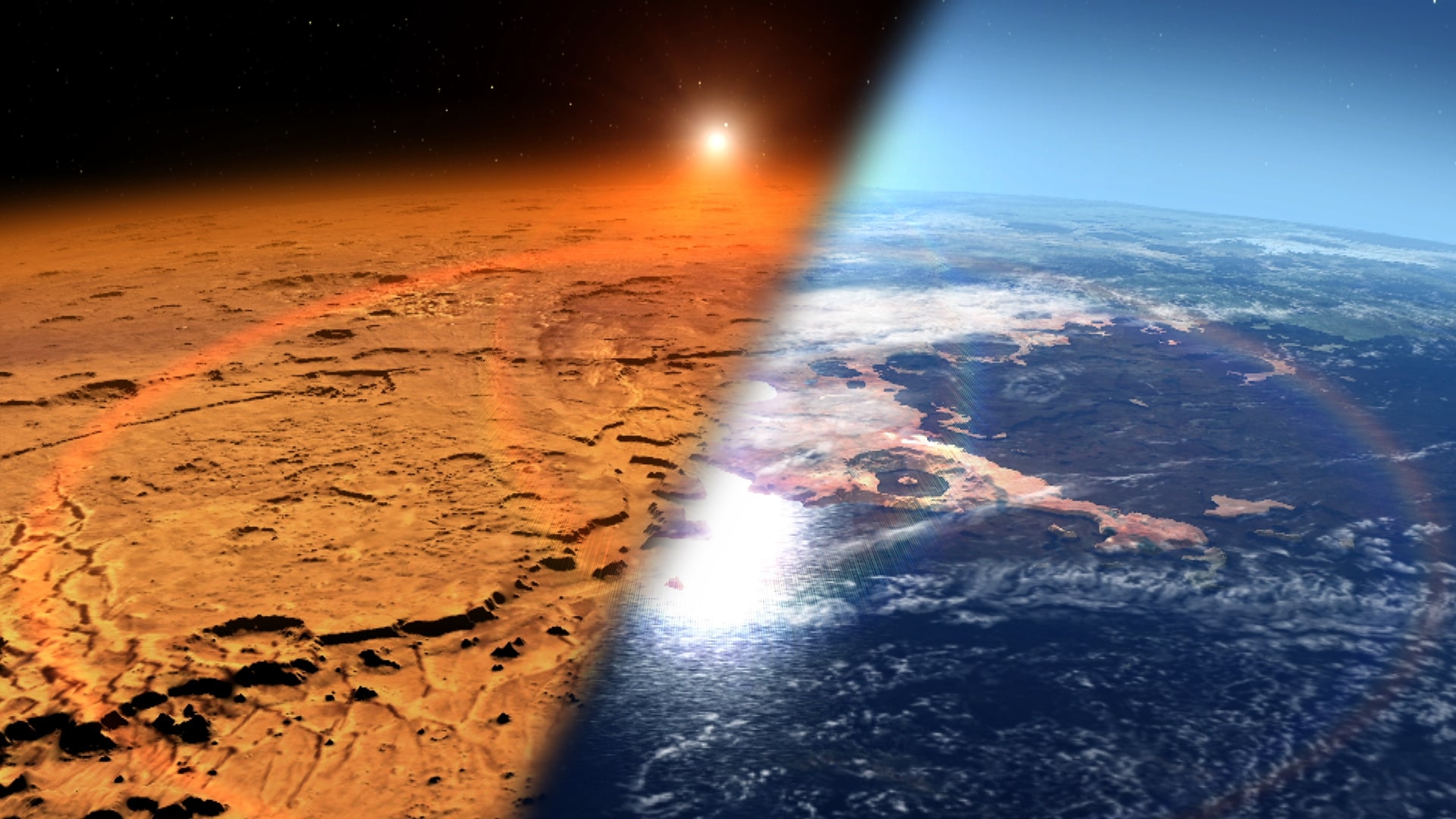
Here on Earth, you can see the aurora of the Northern Lights, when solar winds interact with the planet’s magnetosphere. It turns out that Mars has its own auroras too, called proton auroras, but they give off ultraviolet light which makes them invisible to the naked eye.
NASA’s MAVEN (Mars Atmosphere and Volatile EvolutioN) spacecraft, however, currently in orbit around Mars, is able to detect these auroras using its Imaging UltraViolet Spectrograph (IUVS) instrument. Using data from this instrument, scientists have been investigating the relationship between the proton auroras and the fact that Mars lost its water over time. The Martian aurora is indirectly created by hydrogen in the atmosphere, which comes from water being lost into space.
The animation below shows how the proton aurora is formed. First, solar winds send protons toward Mars, where they interact with a cloud of hydrogen surrounding the planet. The protons take electrons from the hydrogen atoms to become neutrons. These neutral particles can then pass through a region of the planet’s magnetosphere called the bow shock. When the hydrogen atoms enter the atmosphere and collide with gas particles, they give off the ultraviolet light that we call an aurora.
“In this new study using MAVEN/IUVS data from multiple Mars years, the team has found that periods of increased atmospheric escape correspond with increases in proton aurora occurrence and intensity,” lead author Andréa Hughes of Embry-Riddle Aeronautical University in Daytona Beach, Florida, said in a statement.
“Perhaps one day, when interplanetary travel becomes commonplace, travelers arriving at Mars during southern summer will have front-row seats to observe Martian proton aurora majestically dancing across the dayside of the planet (while wearing ultraviolet-sensitive goggles, of course). These travelers will witness firsthand the final stages of Mars losing the remainder of its water to space.”
The research is published in the Journal of Geophysical Research: Space Physics.




